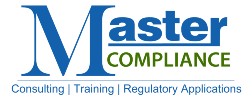Disciplinary actions are often the best way to answer questions such as “how did this happen” or “what can we do differently”. Recently, a member firm named Robinhood Financial LLC was fined $1.25 million for best execution violations. Their shortcomings can provide valuable takeaways to assist other firms in building and solidifying their compliance program.
In October 2016, Robinhood routed its non-directed equity orders to three additional broker-dealers rather than to its clearing broker. The firm received “payment for order flow” for these transactions. Unfortunately, the firm also failed to perform best execution quality testing as compared to other venues. Additionally, the firm did not systematically review certain order types nor maintain supervisory procedures to achieve compliance with FINRA rules.
A Best Execution Committee is Not Enough
Robinhood routed orders away for execution. FINRA Rule 5310 requires firms to conduct either order-by-order reviews of the execution quality or “regular and rigorous reviews”. Firms must perform a review by security and type of order on at least a quarterly basis. Robinhood did have a best execution committee; however, the committee failed to document analysis of any quality reviews and failed to document systematic reviews of other types of orders (i.e. stop orders, nonmarketable limit orders, etc). This action paints a cautionary tale that a committee must fully understand their obligations under a regulatory requirement. They must also have documentation and tools in place to carry out their initiatives.
A Template Procedure Manual Spells Trouble
FINRA Rule 3110(b) requires firms to establish, maintain, and enforce written procedures to supervise its business lines and activities of its associated persons. This does not simply mean a regurgitation of the rule. Robinhood’s procedures, for example, were merely a recited list of requirements. It failed to show how the firm was planning on achieving compliance with the rules. Not only does FINRA review the written document itself, but they also consider how the firm implements the written procedures in their day-to-day processes.
Having off-the-shelf procedures gives firms a greater chance that the procedures will be inaccurate and contain information that the firm does not even do. The main takeaway is to review the procedures for your compliance program as a whole and compare what is written versus what the rule requires. Equally important is to compare what is written versus what your firm is actually doing. If there are any discrepancies, update and customize the procedures so that the manual is both accurate and authentic to your business.
One Product Does Not Fit All
Firms need to ensure that all types of products and subsets of the product receive testing. Robinhood received a citation for not performing a “regular and rigorous review” across the subset of equity products. This included stop orders and orders processed outside of market hours. Best Execution is the specific example here; however, it is applicable to other areas of compliance programs. Often, firms have a testing program in place, but the scope of review is so narrow that it is difficult to conclude that a reasonable review took place.
If you haven’t read it, you can read the full AWC: Robinhood Financial LLC AWC. In summary, Robinhood’s AWC is a great cautionary tale to understand the importance of the design, execution, and testing of a compliance program. Please contact us to learn more about our expert consulting in this area.

